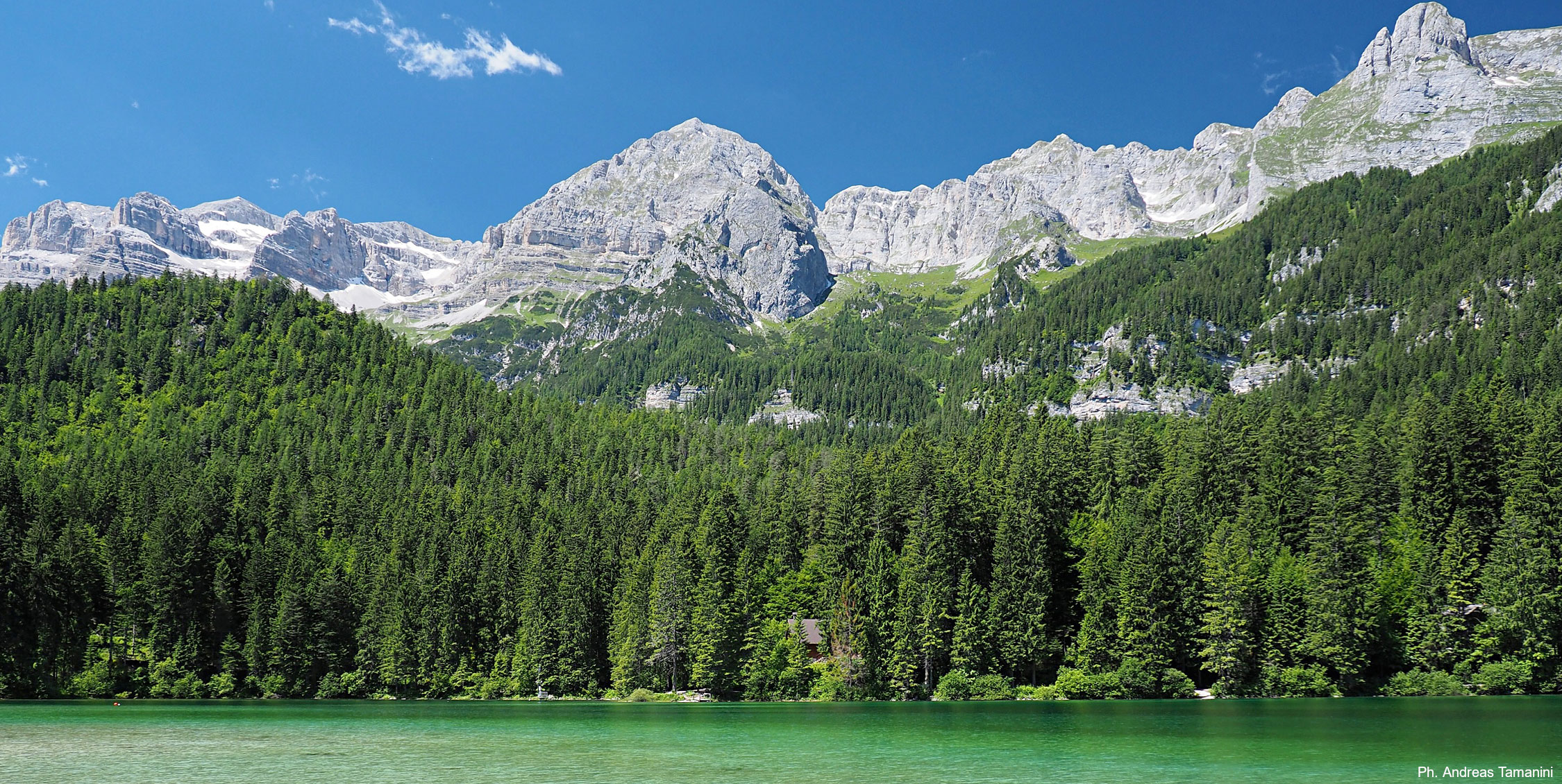Brenta Dolomites
The Brenta Dolomites make up the westernmost part of the Dolomite region, on the western border of the Province of Trento. This chain is a Dolomite island covering an area of 11,135 hectares bounded to the west by the Giudicarie valleys, to the east by the Non Valley and to the north by the Sole Valley.
The Brenta Dolomites are divided into two parts by the Bocca di Brenta pass. The northern part includes the Sfulmini chain and the Grostè massif, while the south boats the highest peak in the System Cima Tosa (3,173m) and the Catena d’Ambiez chain. Among the other high peaks are Cima Brenta and Campanil Basso, the latter a famous mountain that is still a magnet for mountaineering enthusiasts. Not just geography separates the Brenta Dolomites from the other Dolomite chains. The distinctive morphology of the majestic, towering Brenta peaks, shaped by erosion that has carved jagged spires and lofty pinnacles of every size and shape, stands in contrast to the slenderer, fluid lines of the rest of the Dolomites.
The exceptional importance of the natural environment, landscape and geology of this Dolomite System is safeguarded by the Adamello Brenta Natural Park, designated a protected area in 1988 and covering an area of over 62,000 hectares.
Geology
Explore
Google Street View




